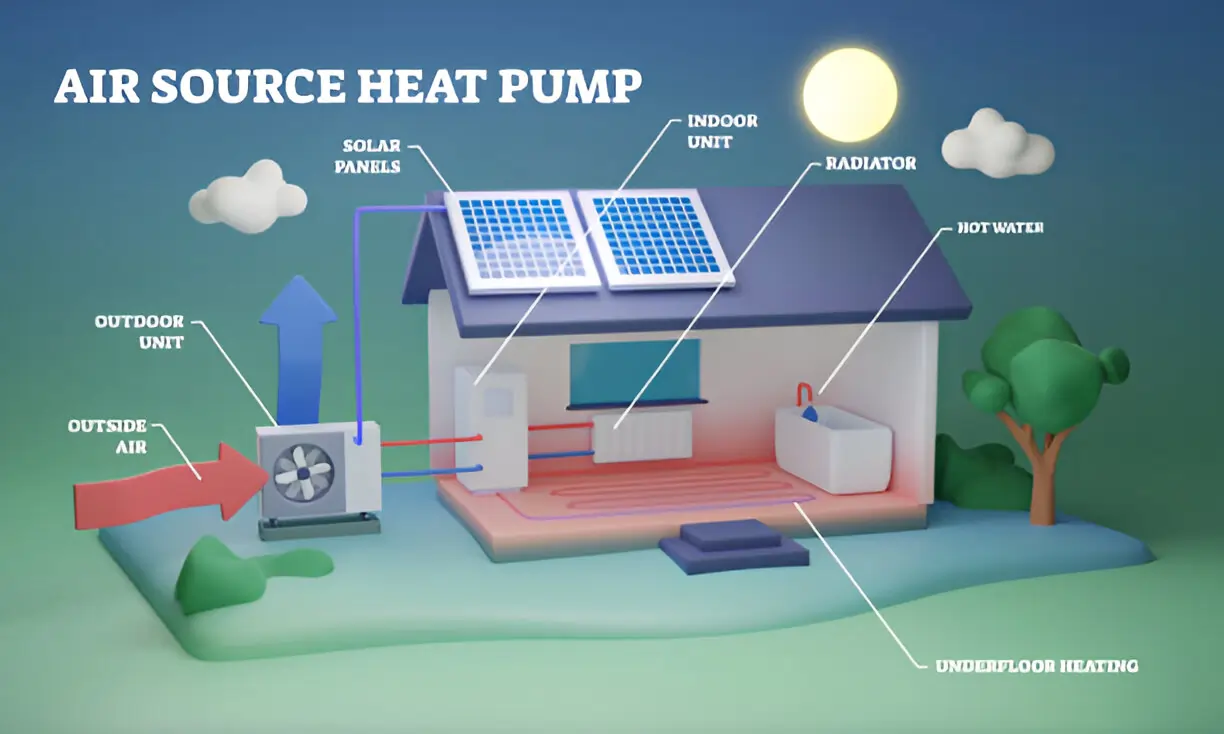Hot Water System Installation: Complete Homeowner’s Guide to Choosing Between Solar, Heat Pump, and Gas Options
Thinking of upgrading or replacing your hot water system?
Choosing the right setup isn’t just about heating water – it’s about energy efficiency, future-proofing, and what makes the most sense for your home, your budget, and your lifestyle. The three leading contenders today are solar, heat pump, and gas systems. Each has its place, but they also come with key differences that matter – especially if you’re a homeowner in New South Wales navigating rebates, rising energy costs, and shifting climate priorities.
This guide cuts through the noise and lays out what you really need to know.
Why Your Hot Water System Matters More Than You Think
Hot water accounts for around 25% of the average home’s energy use. It’s one of those hidden expenses that sneak up every quarter. But beyond bills, it affects your day-to-day comfort – from the pressure in your morning shower to the recovery time after multiple uses.
That’s why choosing the right system isn’t a one-size-fits-all decision. It depends on:
- Your household size and water usage
- Your roof orientation (for solar)
- Local climate conditions
- Access to gas lines
- Upfront vs. long-term costs
Option 1: Solar Hot Water – Best for Long-Term Savings
Solar hot water systems use rooftop panels to collect energy from the sun. That energy heats a fluid which circulates through a tank, either directly or indirectly. These systems usually come with an electric or gas booster for cloudy days.
Pros include lower energy bills, eligibility for STCs and state rebates, and a lower carbon footprint. They’re especially ideal for sunny areas like the Central Coast and Lake Macquarie.
Cons include higher upfront costs and the need for roof space. Winter performance may rely on backup boosting.
If you’re planning to stay in your home long-term, solar is the most cost-effective and eco-conscious option. It’s a popular choice for homeowners exploring a central coast hot water system.
Option 2: Heat Pump – Efficient Without Needing the Sun
Heat pumps extract heat from the air and use it to warm your water. Think of it like reverse-cycle air conditioning for your water tank.
They’re highly efficient, work well in shaded areas, and qualify for energy rebates. Downsides include reduced performance in very cold climates and a slower heating recovery rate. Homeowners often weigh these pros and cons against the fluctuating electric rates in texas, which can influence overall savings. Additionally, proper system sizing and professional installation help maximize performance and long-term reliability.
This is a smart option for homes that can’t install solar but still want to reduce electricity use and carbon output.
Option 3: Gas Storage or Instant – Reliable and Fast
Gas systems are known for speed and reliability. Instant models heat water as it flows through, meaning you never run out. They’re ideal for large households or those with high water usage.
They’re affordable upfront and effective but they do rely on fossil fuels, have higher long-term costs, and fewer rebate options. Not ideal for homes going all-electric.
Installation Insights: What to Expect
Solar installations may involve roofing work, plumbing, and electrical upgrades. Heat pumps are simpler, usually replacing your current tank with minimal changes — though airflow must be considered. Gas setups are quick if you have a compliant line, but installing new piping can add time and cost.
Quality installation is essential. Always work with certified professionals who know the local building codes and rebate procedures.
Rebates & Incentives You Shouldn’t Ignore
Homeowners in NSW can access both federal and state rebates:
- STCs for solar and heat pump installations
- Energy Savings Scheme (ESS) rebate
- Potential local council subsidies
These can cut down installation costs significantly. A good installer will handle the paperwork and ensure you get the maximum benefit.
Which System is Right for You? Key Takeaways Without the Table
If you want the lowest long-term cost and carbon footprint, solar is the best investment especially if you’ll be in the home for 10+ years. It does require higher upfront spend and suitable roof space.
If you’re in a shaded home or solar isn’t an option, a heat pump system is your next-best choice. It offers strong efficiency gains and rebate support without needing roof panels.
For fast, on-demand hot water, gas instant systems are still a strong contender — particularly for larger households. Just be mindful of rising gas prices and reduced environmental benefits.
The Smartest Setup? Combine Solar Hot Water With PV Panels
If you’re already exploring solar energy, consider pairing your water system with a rooftop PV array. This combination can drastically reduce your electricity and water heating bills.
If you’re located in Lake Macquarie, solar power installation Lake Macquarie offers an ideal bundle to reduce your carbon footprint and boost property value.
Don’t Just Buy — Plan With the Right Partner
Avoid the mistake of going with the cheapest installer. Poor workmanship leads to performance issues, warranty voids, and long-term costs. Choose experienced professionals who are licensed, offer post-installation support, and understand your local area.
Solahart CC is one such provider on the Central Coast and Lake Macquarie, with a reputation for expert installs and fair advice — without aggressive upselling.
Final Thoughts
A hot water system isn’t just a utility — it’s a long-term investment. Choose based on your home’s needs, your goals for savings and sustainability, and the actual conditions on your property. Ask questions. Read reviews. Don’t rush it.
The right system will reward you every day — not just with warm water, but with lower bills, greater efficiency, and peace of mind for years to come.
Read more: A Parent’s Guide: Getting Started with GCSE Distance Learning – SizeCrafter
Your Guide to Choosing the Right Material for Your Custom Labels – SizeCrafter
Scaffolding Fall Injury? Why You Need a Specialized Accident Lawyer – SizeCrafter

